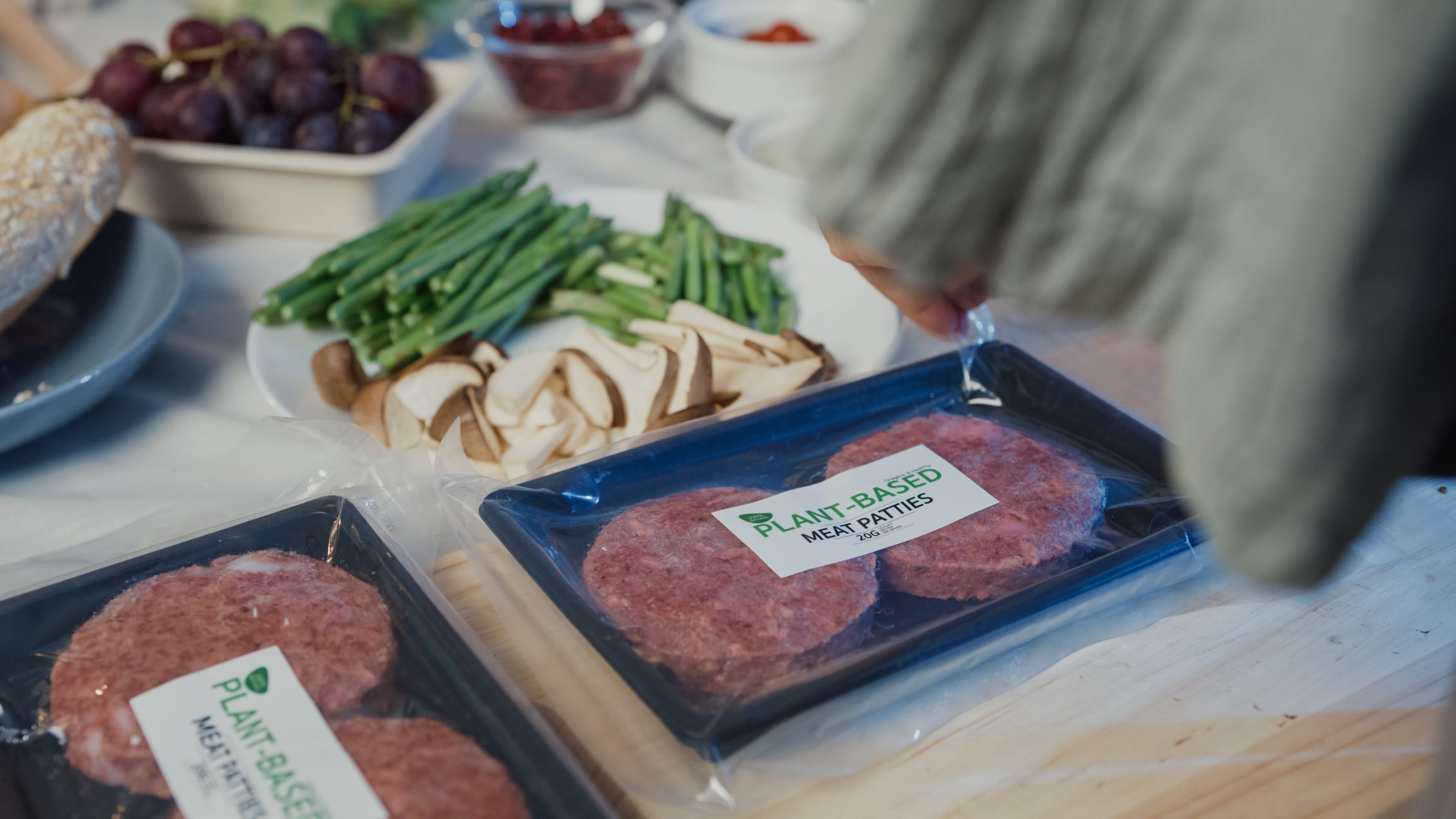Alternative protein companies are reducing staff, rebranding and repositioning their products to address concerns about taste and texture, price and scalability.
Alternative proteins, which include plant-based, cultivated and fermentation-derived proteins, face several headwinds including taste and texture performance, price and scaling production.
Plant-based meat manufacturer, Tender Food, is focused on creating high-quality trial moments for consumers and on foodservice expansion opportunities, explained Mike Messersmith, CEO, Tender Foods. Messersmith, formerly with Swedish oat milk frim Oatly, took the helm at Tender last year with the goal of building partnerships particularly in the food service industry.
The company’s partnership with Massachusetts plant-based chain Clover Labs, merges Tender’s mission to provide consumers with a clean label product that could shift perceptions about plant-based meats as expensive, over-processed foods with unsatisfying taste and texture experiences, Messersmith said.
Tender’s patented in-house production of its plant-based chicken, beef and pork weaves plant fibers into whole-meat cuts using seven ingredients, Messersmith said. The company’s vertically integrated production enables Tender to offer competitive pricing without relying wholly on investor capital, which has “plagued the industry over the last couple of years,” he added.
“We have a relatively simple ingredient statement where we are not trying to do really exotic, crazy ingredients. We do not need a whole bunch of chemistry or big expensive machines to make our product. We are able to hit price points that work for consumers to be able to buy it,” Messersmith said.
Alternative proteins 3.0: Balancing health and taste
This story is part of a special collection of articles examining the fast-evolving alternative protein market that was emailed to subscribers.
Check out the full collection: Alternative proteins 3.0: Balancing health and taste
To receive future special editions via email, register for free for FoodNavigator-USA’s newsletters. Find out more by clicking the yellow “register” button at the top of our homepage or by visiting https://www.foodnavigator-usa.com/Info/Why-register/.
Last spring Tender raised $11 million in a Series A round and was recently awarded a $5.4 million grant from the Department of Energy to help scale up and reduce carbon emissions in the supply chain. The company’s strategy involves carefully selecting funding sources and avoiding overleveraging with large equity rounds, focusing instead on manageable, strategic investments, Messersmith said.
“We are trying to be really smart about the capital sources for our journey. It can come from lots of different places, not exclusively growth equity, but also finding smart partners to help us on equipment debt or eligibility for these types of grant monies and grant programs,” he added.
Asentia’s ‘unconventional’ approach to collecting consumer feedback
Blended meat start-up Asentia is on a mission to overcome barriers in consumer adoption for alternative proteins. The company recently hired former Impossible, NotCo and General Mills executive, Eric Hedstrand as co-founder to help scale up production of Asentia’s blended meat products.
The company’s experience at a farmer’s market in Houston was a success, where its truffle-mushroom meatballs and Italian hot sausages blended with animal and plant proteins sold out in two hours, said Parendi Birdie, CEO and founder of Asentia. The startup’s product line-up also included bourbon-bacon-artichoke sausages and black Angus-roast shallot and shiitake burgers.
While the farmer’s market approach may be unconventional for start-ups in the space, Asentia’s goal was to collect direct consumer feedback through conversations and surveys about the product and its branding, Birdie explained.
“We are going to continue launching in this low, strategic kind of unconventional way because I want to get as much feedback as we can and not just grow as big and fast as we can and cross our fingers and hope that the product sells well,” she added.
Currently, Asentia is focused on expanding beyond their commercial kitchen and partnering with co-manufacturers to increase capacity.
Looking ahead, Asentia continues to invest its resources into branding and consumer research to fine tune its formulations and stand out in the alternative protein space, Birdie said.
Vow Brands prioritizes commercial strategy after cutbacks
Australia-based cultivated meat company Vow Brands has been selling its cultivated products to restaurants, bars and caterers in Singapore since last year. The company focuses on producing premium Japanese quail products, like foie gras (in frozen slices) and parfait in its commercial facility in Sydney. Vow also offers cultured tallow, a by-product of the foie gras, which is sold for candles, and is currently prototyping cold cut meat and steak.
Vow’s go-to-market strategy focuses on launching in foodservice to simplify the sales cycle and bypass consumer education challenges, explained George Peppou, CEO, Vow Brands. Diners are more likely to try new products when presented by trusted chefs, which can help create a “halo effect,” building credibility and broad appeal, he added.
In 2023, Vow installed its first 15,000-liter production line and in 2024 it installed its first 20,000-liter vessel, allowing the company to “continuously” produce and sell its products, said Peppou, CEO.
“We are in this fairly fortunate position where we have these very high-end products in high-end restaurants that are selling for a very premium price point. We have production which allows us to essentially make the unit economics of that quite solid. And we have a bunch of approvals that are quite advanced in the regulatory process, especially in Australia and New Zealand,” Peppou said.
Vow’s narrowed focus on its production and customer relationships did not come without its pitfalls. Earlier this month, Vow laid off a third of its employees to focus on commercialization.
“The two things which really matter for us are supply and demand. We had a significant R&D program on next-generation products on the three to five-year horizon, but especially in the short term, we just really need to nail commercialization of this first generation of products so we needed to lean down the team to make sure we have the runway to be able to do so,” he added.




